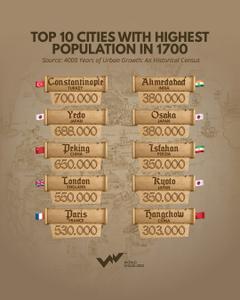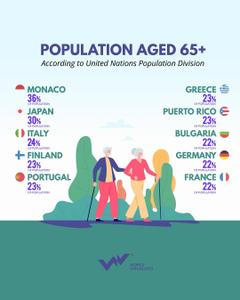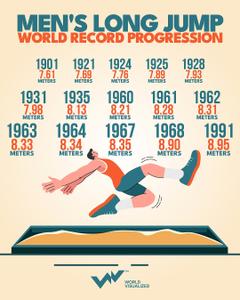news

World / 39 weeks ago
How cities have transformed over time – And what’s next for urban growth
Cities have always been in flux, shaped by trade, industry, and geopolitics. From ancient commercial hubs to modern megacities, urban centres have expanded and adapted in response to economic and technological changes. But what forces have driven these shifts, and what can we expect in the future? Data revealed that the 19th and 20th centuries saw one of the most significant transformations in urban history. The rise of industrialisation fuelled large-scale migration to cities, as people sought jobs in factories and emerging industries. Urban populations surged, and cities like Manchester, New York, and Shanghai expanded rapidly, becoming economic powerhouses. Colonial influence also played a key role, as trade networks and administrative centres grew, shifting global economic power toward industrialized nations.

World / 41 weeks ago
Global aging crisis: The growing impact of a rapidly aging population
By 2050, an estimated 16% of the global population will be aged 65 or older, doubling the share recorded in 2022, according to the United Nations Population Division. This dramatic demographic shift reshapes societies worldwide, with Monaco leading the way. In the tiny European principality, 36% of the population is aged 65 or older, the highest proportion globally. Japan, a nation already grappling with the challenges of an ageing society, follows closely behind at 30%. The country’s ageing demographic has sparked critical conversations about the sustainability of its healthcare and welfare systems as policymakers scramble to address the needs of its older citizens.

Environment / 51 weeks ago
The role of recycling in resource conservation and environmental protection
Recycling offers a pathway to sustainable resource management, helping to reduce waste and lessen environmental impact. According to IPEN research, each material—plastic, glass, paper, or aluminium—has its challenges and benefits. Plastics are widely used, but only 9% are effectively recycled. Issues like toxicity and microplastic pollution complicate the recycling process, and most plastics can only be recycled once or twice, limiting their reuse potential.

Environment / 1 year ago
What is our earth made of?
The Earth we live in is far from a solid, uniform mass. Instead, it’s an intricate structure with layers that vary in thickness, composition, and extreme temperatures. From the crust to the core, each layer plays a crucial role in shaping the planet as we know it. California Academy of Sciences reveals more details about our earth.

World / 1 year ago





